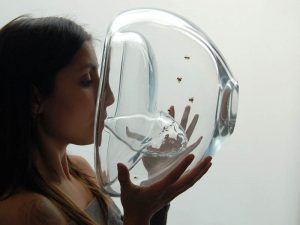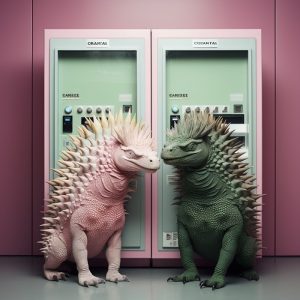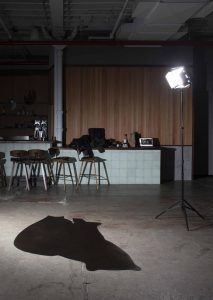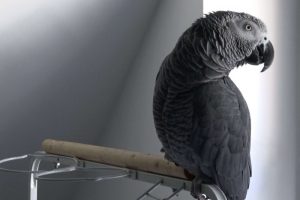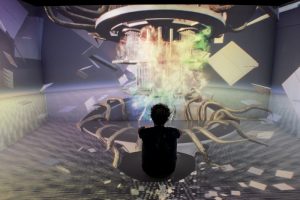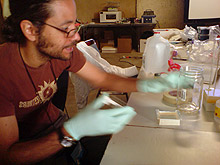
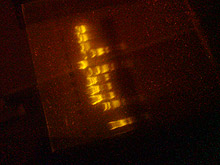
First up at the second day of the workshop on biotech and art was artist and Buffalo-based researcher Paul Vanouse. Paul explained the different ways of “fingerprinting” one’s DNA. In his view, the results of the two methods which are basically about either splicing apart of amplifying the genetic sequence contained in every cell, tell as much about the method that’s being used as they tell about the actual genome. Thus the notion of the “individual” fingerprint and how racism and a possible genetic racism might relate in the future is also the subject of his own works. Using the same imaging technique, we got to actually splice up virus DNA and put it into a gel in which the separated parts will travel at different speeds, allowing to be identified under UV light. In his more recent work “Latent Figure Protocol” he uses the actual genetic sequences to actually draw on the gel, re-creating for example a Copyright-logo.
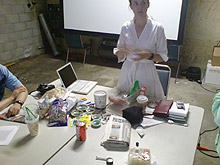
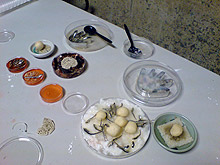 Natalie Jeremijenko did the second and final part and gave a brief overview of her ideas on what a laboratory is and how it could be re-imagined. The victorian notion of zoos for example, the impossibility of interaction between people and the animals in their closed-off and labelled enclosures. In her view, communication should rather be fostered, especially between urban dwellers and the animals that followed man to the cities. The projects she recently developed dealed with that, especially the pigeon (it’s the animal of the moment here!) and fish-related projects at the recent Whitney biennial in New York City. Taking up her notion of “cross-species cuisine” (food that’s good for man and animal), we actually made food that would be tasty for people and fish and even be healthy since the Chitosan we put in it would actively remove mercury and other heavy metals and pollutants from the fishes’ bodies. Please Feed the Fish!
Natalie Jeremijenko did the second and final part and gave a brief overview of her ideas on what a laboratory is and how it could be re-imagined. The victorian notion of zoos for example, the impossibility of interaction between people and the animals in their closed-off and labelled enclosures. In her view, communication should rather be fostered, especially between urban dwellers and the animals that followed man to the cities. The projects she recently developed dealed with that, especially the pigeon (it’s the animal of the moment here!) and fish-related projects at the recent Whitney biennial in New York City. Taking up her notion of “cross-species cuisine” (food that’s good for man and animal), we actually made food that would be tasty for people and fish and even be healthy since the Chitosan we put in it would actively remove mercury and other heavy metals and pollutants from the fishes’ bodies. Please Feed the Fish!

